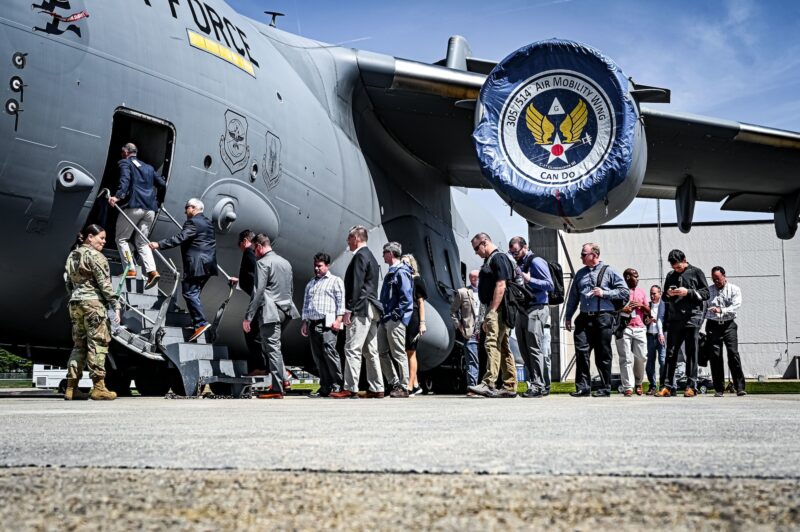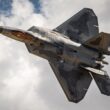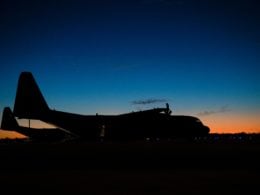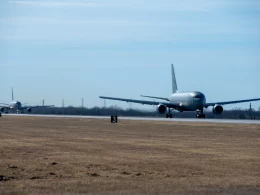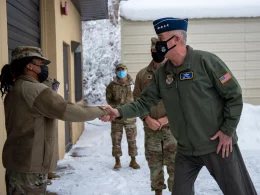JOINT BASE MCGUIRE-DIX-LAKEHURST, N.J. —
Air Mobility Command hosted the annual Spring Industry Preview for Department of Defense and industry partners at Joint Base McGuire-Dix-Lakehurst, N.J., April 11-12.
The theme was “Outpacing the Threat Together: 500’ & Below.” The conference is designed to introduce industry innovators to the operational challenges faced by the Mobility enterprise and invite them to collaborate on solutions. This year, presentations focused on operational challenges of the U.S. Air Force Expeditionary Center.
Gen. Mike Minihan, Commander of AMC, launched the event with two problem statements: (1) The Joint force is not as ready, integrated or agile as it thinks it is; (2) The force is not ready to fight from inside the first island chain.
“American industry has answered the call to help reduce gaps as quickly as possible,” Minihan said. “Speed and technology may not win the day. Critical thinking and adaptive, innovative execution will. That’s where our Industry partners come in.”
Throughout the conference, industry partners received briefings and hands-on, immersive demonstrations from subject matter experts highlighting challenges Airmen experience when executing the global air mobility mission. AMC leadership challenged participants to develop sustainable, scalable solutions and leverage existing infrastructure to close four capability gaps: command and control, navigation, maneuver under fire, and tempo.
“We need the capability to be lighter, leaner, faster and multi-capable,” said Maj. Gen. John Klein, USAFEC commander. “The Airmen are the magic — they should not have to work so hard to bring that magic day in and day out. Our responsibility as leaders is to organize, train and equip our Airmen so they can bring swift success on the battlefield. This is why we need your help.”
AMC must be capable of executing its mission in contested environment with the minimum amount of equipment and personnel. According to Klein, the command must maintain the agility needed to support the joint force scheme of maneuver and become “multi- capable” in order to cover capability gaps and assist joint partners complete tasks with which they have limited familiarity.
Klein stated command and control of the global air mobility support system, or GAMSS, is his number one priority. Expeditionary Airmen will ultimately become a high demand, low density asset in a peer conflict.
“There is no airpower without air mobility, and there is no air mobility without air mobility support. This is what gives America its global reach. We have the ability to create mobility nodes where they don’t currently exist,” Klein said. “Logistics wins wars.”
AMC’s GAMSS will be the primary joint force maneuver system in areas of operation like the Pacific, where a NATO-like, combined capability partnership does not currently exist, according to Minihan.
The Pacific presents the tyranny of distance, or vast stretches of ocean between likely forward operating locations, with many of them located in the first island chain, which Minihan identifies as the most critical area of success in the contested environment.
“There are critical gaps in the capability and capacity required to fight and win inside [it],” Minihan said.
To be effective beyond the first island chain, mobility operations must close the critical gaps and will require flexible solutions.
Industry partner solutions will be presented at the Airlift/Tanker Association Industry Interface Day during the A/TA Symposium scheduled for November 2023.




